Black holes and their mergers#
Additional Recommended Resource: Black-hole binaries, gravitational waves, and numerical relativity Rev. Mod. Phys. 82, 3069.
Monday, Mar. 31, 2025
astrophysics of stars and planets - spring 2025 - university of arizona, steward observatory
Today’s Agenda#
Announcements (2m)
Reading Overview/Key Points (10m)
ICA 18 - Listening to Binary Black Hole Mergers (25m)
Debrief + Share Results (10m)
Stellar Mass Black Holes#
For this discussion we will be focusing on black holes formed via stellar origin, not primordial black holes potentially created in the early universe via other means.
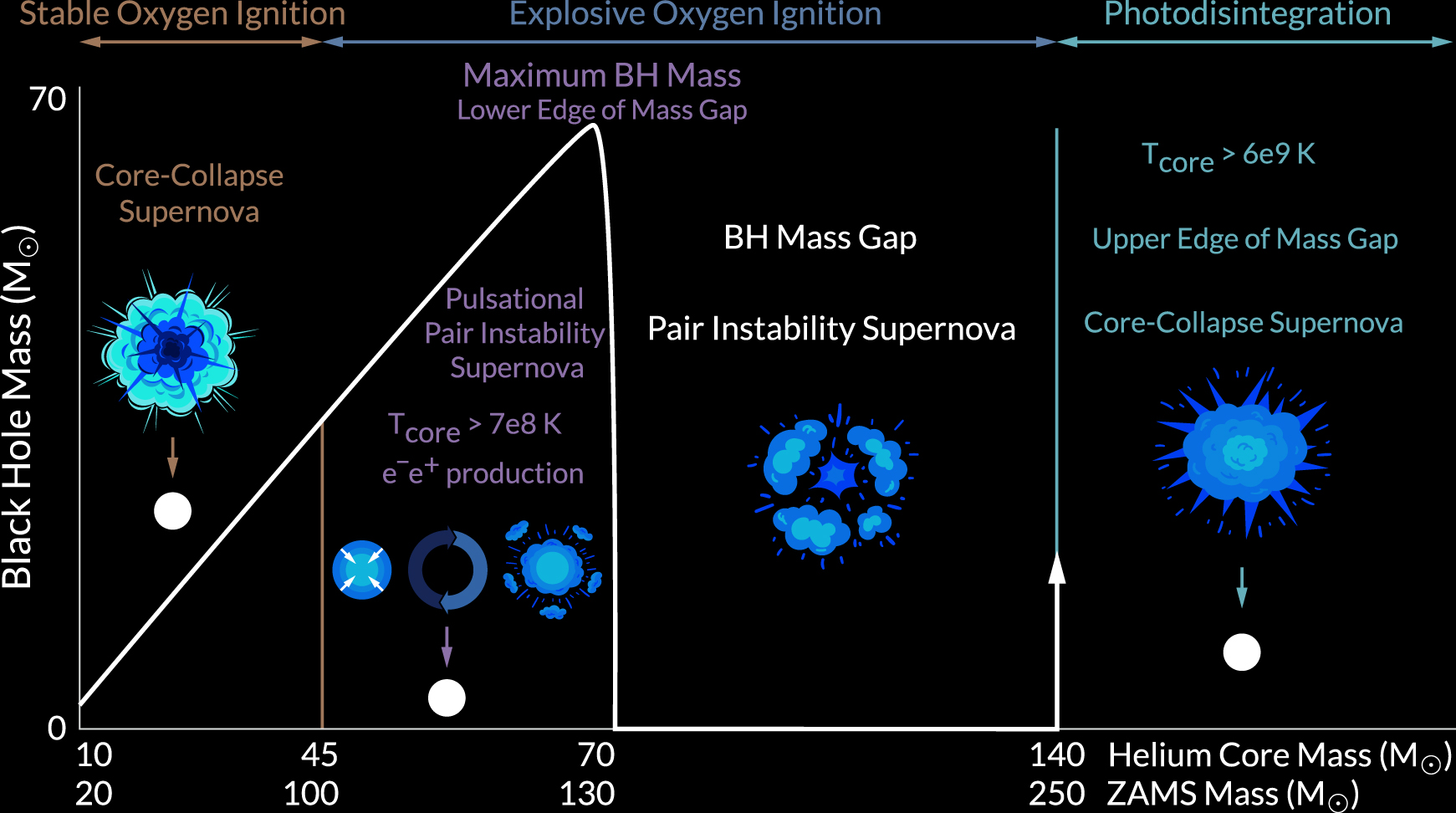
Illustration of a single-star BH mass spectrum. Credit: Ebraheem Farag et al 2022 ApJ 937 112.
We can identify three unique physically motivated regions of the BH mass distribution:
From lowest mass to highest mass:
The first boundary is set by the maximum allowed mass of a neutron star. Recall this is EoS dependent. \(M_{ZAMS} ~ 20M_{\odot}\).
Next, is electron–positron pair production regime. Stars with initial mass of \(\gt\sim100M_{\odot}\) can have \(T_{c}\gt7\times10^{8}\) (K). This allows for the production of electron–positron pairs from photons via the \(\gamma + \gamma \rightarrow e^{-} + e^{+}\), the net result being \(\Gamma_1<4/3\) in some regions and the core becoming dynamically unstable prior to O-ignition. This leads to a Pulsational Pair Instability Supernova (PPISN) and eventually a black hole. \(M_{ZAMS} ~ 100M_{\odot}\).
The next boundary, which also defines the peak of the stellar black hole spectrum, is defined by the point at which the pulse initiated by the pair-instability that it completely unbinds the star and no remnant is left behind. This defines the lower limit of the black hole mass gap. \(M_{ZAMS} ~ 130M_{\odot}\).
The next boundary is at \(M_{ZAMS} ~ 250M_{\odot}\) where the core can reach temperatures of \(T_{c}\gt6\times10^{9}\) K and endothermic photodisintegration becomes efficient at absorbing energy and preventing the unbinding of the star until reaching CC and eventually BH formation.
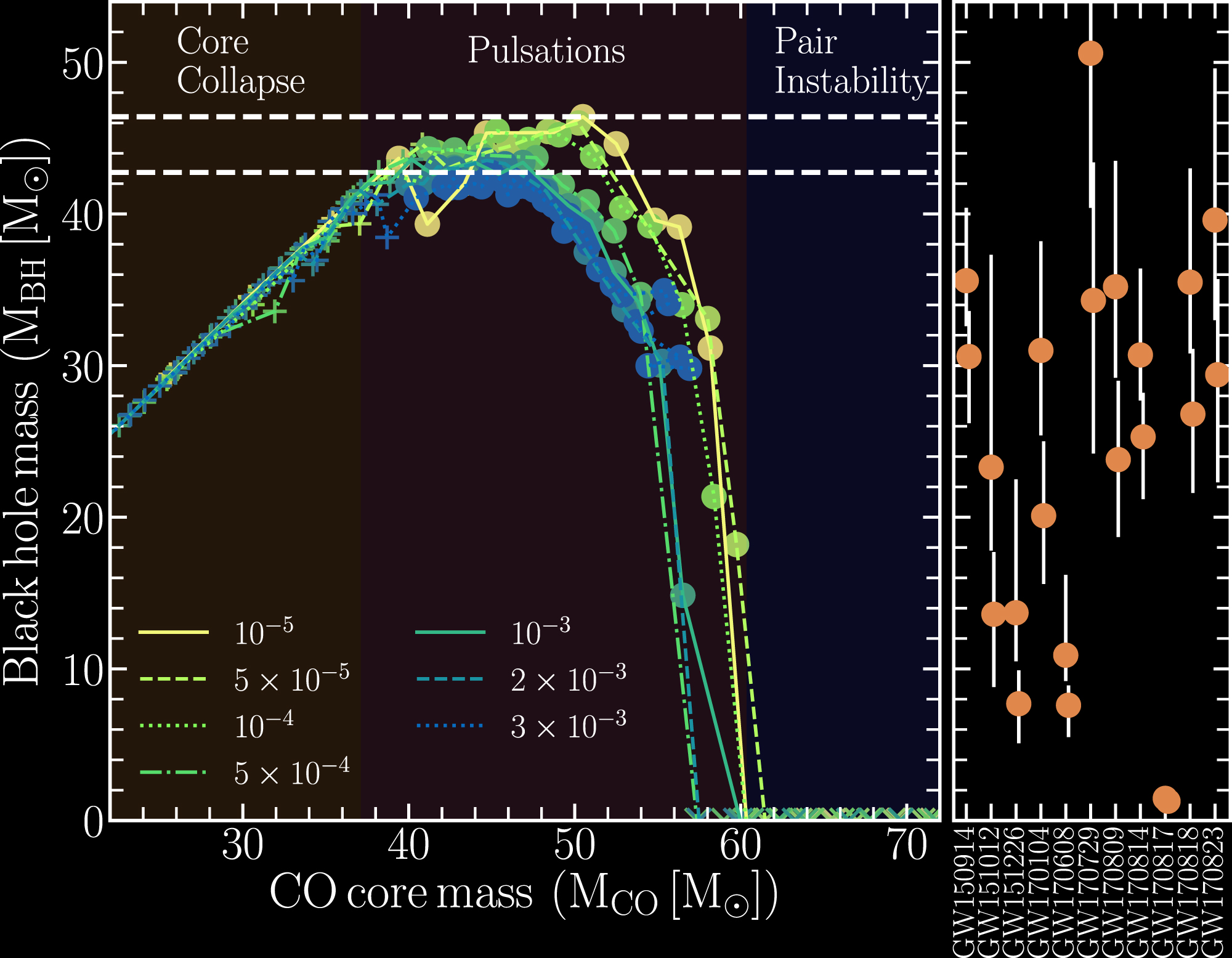
Mass of final BH as a function of the CO core mass for different metallicities. Credit: R. Farmer et al 2019 ApJ 887 53.
Pulsational Pair-Instability Supernovae (PPISN)#
Steps in a PPISN include:
The core contracts rapidly due to the pair instability and softening of the EoS.
Explosive O- or Si-burning occurs.
The core expands and cools until contracting again due the instabilty.
Occurs on a hydrodynamic or KH timescale depending on the mass of the Helium core.
The duration from first pulse to iron CC can span hours to 10,000 years.
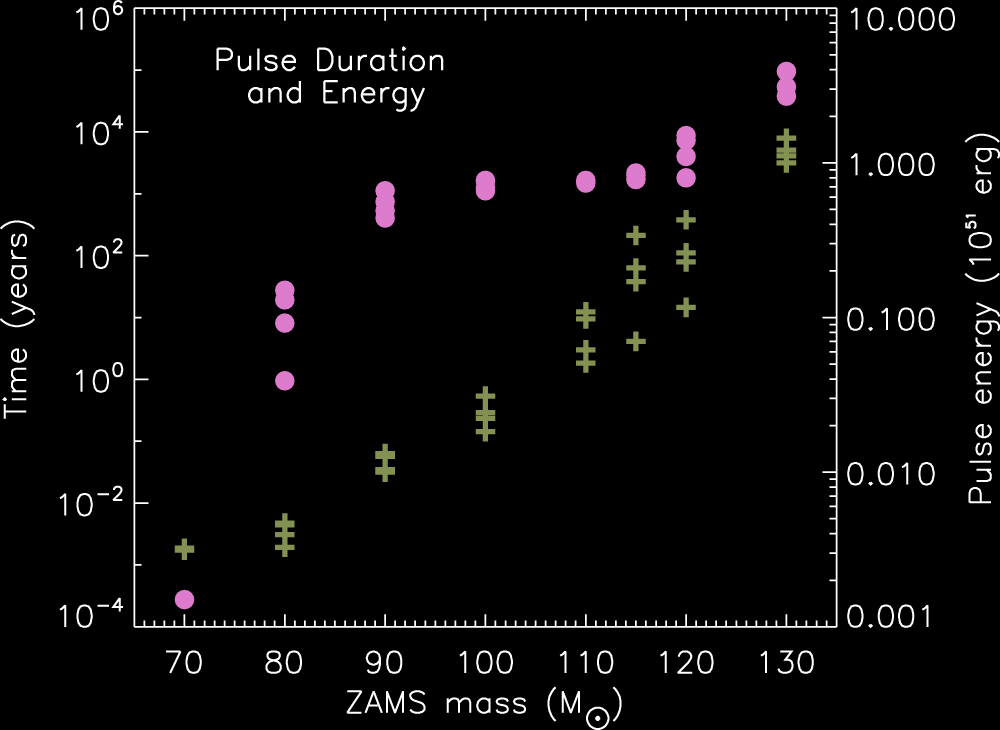
Pulse duration in years (blue crosses) and total kinetic energy in all of the ejected shells in units of \(10^{51}\) erg (solid green circles) as a function of the main-sequence mass in for full stars of 10% solar metallicity evolved until iron core collapse. Credit: S. E. Woosley 2017 ApJ 836 244.
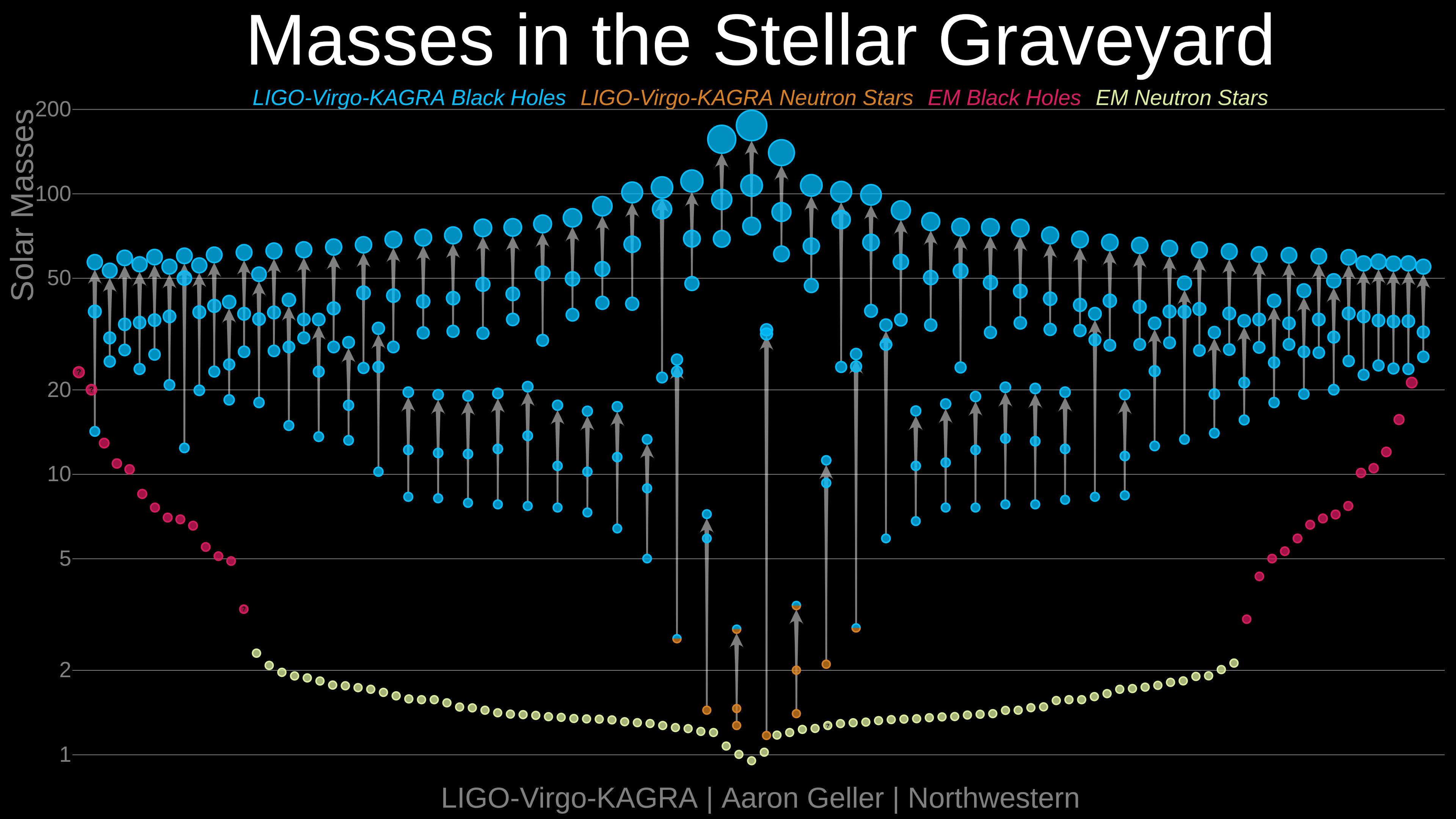
Announced gravitational-wave detections and black holes and neutron stars previously constrained through electromagnetic observations up to O3 with p_astro > 0.5. Credit: LIGO-Virgo / Aaron Geller / Northwestern University.
Evidence for Dynamical Formation#
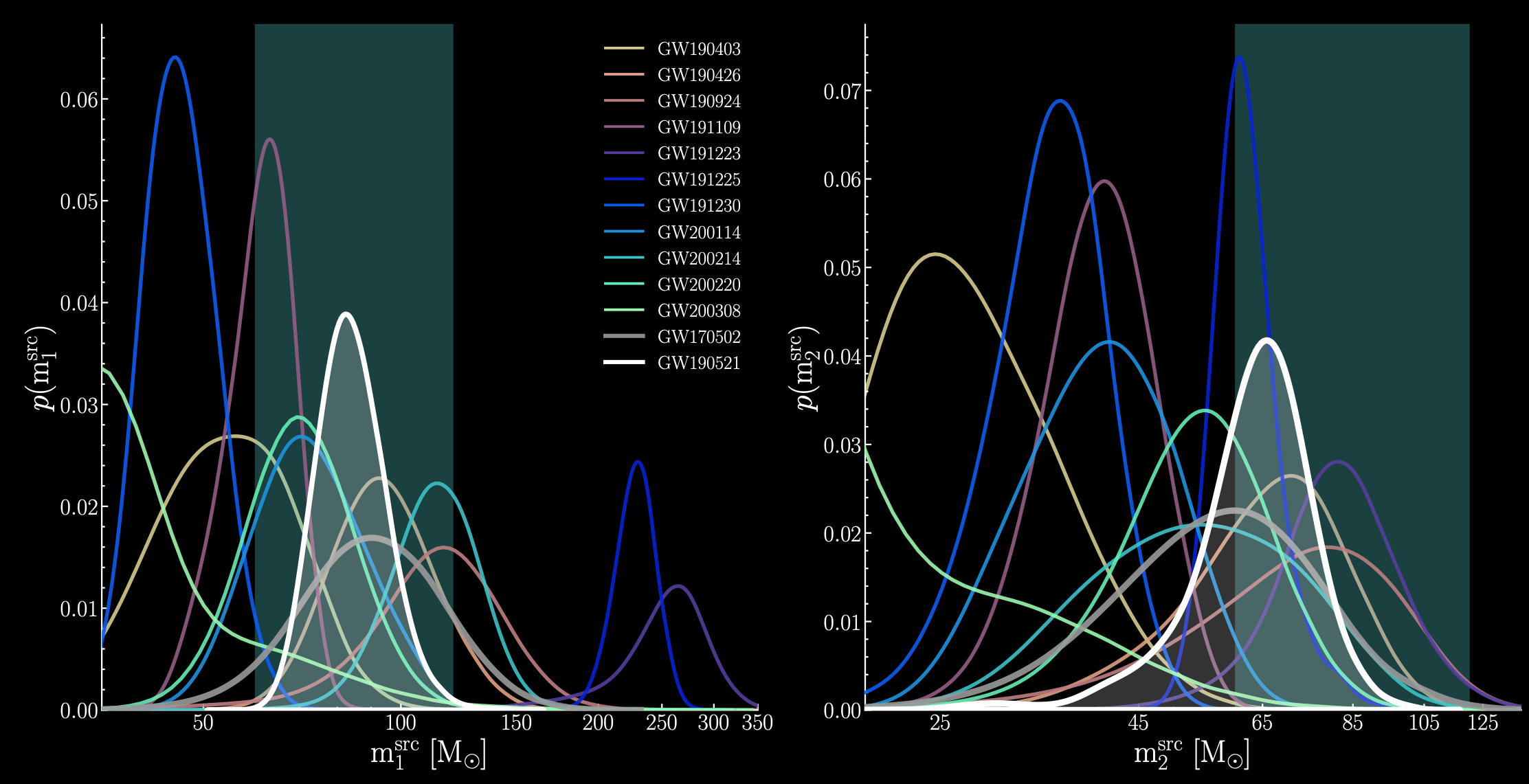
Marginal probability distribution of the primary (left) and secondary (right) black holes in the source frame, as inferred through RIFT with NRSur7dq4 model. Credit: Rocha et al, submitted. Shaded region is the PISN mass gap range.
Solutions to this result include the possibility of hierarchical mergers, containing the remnants of previous black-hole mergers.
Promising locations for efficient production of hierarchical mergers include nuclear star clusters and accretion disks surrounding active galactic nuclei.
In-Class Assignment 19#
In-Class Assignment 19 can be found here.


